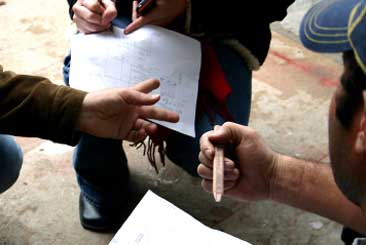|
|
| Is Your Contingency Plan “Operationally Realistic, Part 1 |
| By William Sturgeon |
| Published: 07/13/2009 |
 Over the years, I have reviewed numerous emergency/contingency plans. The majority of them looked good on paper, they were well written, numbered appropriately, covered all of the applicable industry standards, etc., yet they left me with the feeling that, if needed, they would be “operationally” impractical. So I started using the following matrix.
Over the years, I have reviewed numerous emergency/contingency plans. The majority of them looked good on paper, they were well written, numbered appropriately, covered all of the applicable industry standards, etc., yet they left me with the feeling that, if needed, they would be “operationally” impractical. So I started using the following matrix.
The matrix that I use, requires the reviewer to closely examine every element of the plan. Since the events of September 11, 2001, emergency plans have taken (or should have taken) on several new dimensions, which will be discussed indepth in Part II of this article. The matrix that I use can be applied to new plans expand existing plans, or can be used to review current plans. It is composed of four major sections and they are: Paper -> People -> Places -> Equipment. I have used the matrix for over twenty years to solve problems, develop programs, review policies, procedures, protocols, and plans. The reason that I use this matrix is because I believe that it makes a person approach the issue in a logical and methodical way. As the old saying goes: “How do you eat an elephant? One bite at a time!” I believe that the matrix aids people in reducing an issue into workable parts. Additionally, the matrix is set-up so that each element must be addressed. Here are some examples: Paper - Mission statement, policies, procedures, protocols, training curricula, post orders, use-of-force / rules of engagement, etc. People - Staff (broken down by function), offenders, visitors, family members, and the press, etc. Places - Entire facility (broken down into sections), trouble spots, areas of vulnerability (public access, sally-ports, emergency generator (s), natural gas shutoffs, waiting room, etc. Each area has to be totally assessed. Equipment - Consists of Equipment (weapons, chemical agents/pepper spray, and delivery methods), Materials (Hazmat suits, gas mask filters, latex gloves, geiger counters, etc.) and Technology (intrusion detection, video cameras, fences/walls, lighting, computers, data bases, etc.). In the years prior to the terrorist attacks of September 11, 2001, emergency/contingency plans were focused on traditional correctional emergencies (disturbances, escapes, work slowdown, fires, hostage situations, natural disasters, etc.). Today’s emergency/contingency plans must address terroist attacks, organized gang activities, the incarceration of terrorists and para-military offenderS like the Los Zetas (former members of the Mexican Army’s Special Forces). These groups and others can present issues that must be addressed in the facility’s emergency/contingency plans. Here is a scenario that you can think about until the next time: -> It is 10:00 A.M. there is a correctional industries truck in the sally-port; about 100 offenders are in the education area. Without warning the truck in the sally-port explodes! The offenders in the education area take the security officers and teachers hostage, while the outside patrol reports that a group of heavily armed men are shooting at his vehicle with automatic weapons and are running toward the blown-out sally port. Topics That Will Be Addresses in Part Two. - How to deal with multiple issues transpiring simultaneously. - How a facility can use existing equipment, weapons, etc., against an armed attack. - Looking to the future about what can be done to harden the facility. Visit the Bill Sturgeon page |
Comments:
Login to let us know what you think
MARKETPLACE search vendors | advanced search

IN CASE YOU MISSED IT
|


Bill, It is refreshing to see a 3 dimensional view of planning being proffered for consideration. Many organizations create visually good plans that yield "unintended consequences," a tidy way of saying that there were mistakes in the plans. I think that logic creates excellent planning especially when a matrix is used as a template or baseline for building an Emergency Response Plan. We have learned much about preparedness during the first decade of this new century but the learning took place at a cost of lives and infrastructure (9-11 and Katrina). After many years of work in corrections, I can see the pendulum swinging madly towards elevated levels of new violence since today's correctional operations are benchmarked on successes that are 10-15 years old. Consequently it should be this industry's business to discover, and quickly at that, the new security preparedness paradigm that works now. Many thanks for your work and challenging our industry's leadership to keep on thinking. John Murphy, Captain NYC Department of Correction